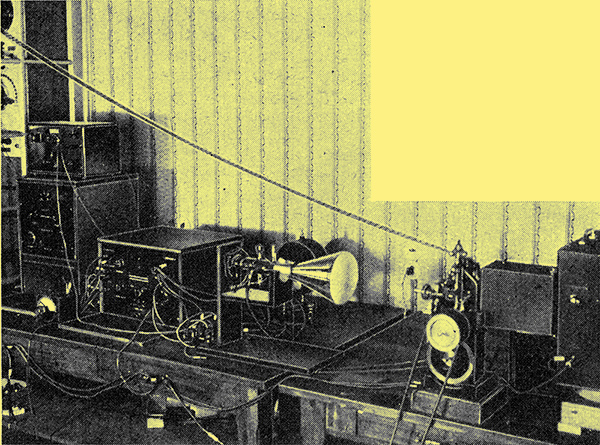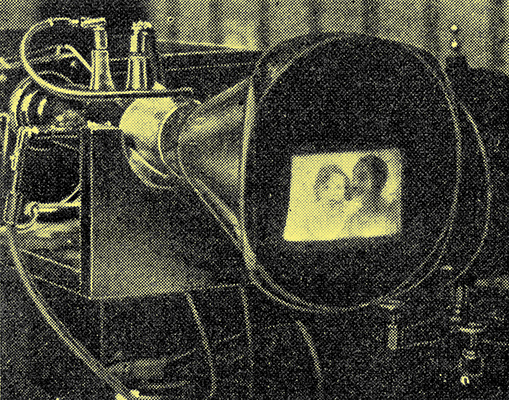|
Modified cathode-ray and 'Variable Speed' principle.
Baron Manfred von Ardenne's work on cathode-ray television is well known, and a short description of his recent achievements was given in The Wireless World of September 9th, 1931. In the system described, the principles follow the orthodox practice of a cathode ray, both at the transmitter and at the receiver, travelling along its pre-ordained path, line after line, With a constant speed of movement. At the receiver the constant speed of movement is accompanied by a varying intensity of ray, governed by the incoming signals and corresponding to the varying light and shade of the picture being scanned at the transmitting end. These intensity variations in the ray produce, of course, corresponding variations in the brightness of the spot traced by the ray on the fluorescent screen, and thus reproduce, line by line, the original picture in a fraction of a second.
A New Idea

Experimental television station designed by von Ardenne for transmitting cinematograph film.
An entirely new idea, departing entirely from these conventional principles, was suggested some time ago by R Thun. Why complicate matters at the receiver in the way you do? argued this original thinker. Your ray must, I agree, move along line after line so as to cover the whole picture surface; and in doing so it must also reproduce the variations in light and shade representing the original subject. But you go to endless trouble to control it so that it travels with a uniform speed, in exact synchronism with the uniform speed at the transmitter; and, having done this, you have to produce your light and shade by making your signals control - in addition - its intensity. Surely this is rather like cutting a large hole in the door for the big dog, and a small second hole for the puppy? For if you make your ray travel quickly where you want shade, and slowly where you want light, you will kill three birds with one stone. First, you will save time over the dark parts, Where detail is not so essential, and have that extra time to spare for the bright parts, where you want all the detail you can get. Secondly, you will get your light and shade without the complication of having to modulate the intensity of your ray, since the more slowly it moves over a certain spot the brighter will it make that spot; and, finally, since the ray can now be kept always at its highest intensity, you will raise the whole level of brightness of the image.
Certain Difficulties Overcome

An enlarged view of the cathode ray tube which, owing to its freedom from inertia, is found an essential part of the equipment.
It is probably some bright idea like this, departing entirely from established notions, which will one day come to transform television from its present rather unsatisfactory state into a popular success. The attractiveness of Thun's suggestion [1] A paper by Thun on the pros and cons of his suggestion may be found in the German journal Fernsehen No. 3, Vol. 2, 1931. was recognised at once by many workers, but obviously it was not an easy thing to carry out successfully. During the past year, however, von Ardenne has been experimenting on parallel lines, and the latest information is that he has overcome 'the various difficulties' so successfully that he can already transmit and receive 10,000 element pictures by this system. The need for very rapid and accurate variations in the vast speeds of travel involved in television calls for the use of a cathode ray with its marvellous freedom from inertia at the transmitter as well as at the receiver. The transmitter, in its experimental form, is shown in the illustration. One of the peculiarities of the system is that the picture being transmitted appears on the end of the transmitting cathode-ray tube.
|